The Most Effective Tips to Get Fit for Ski
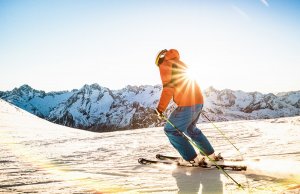
There’s a right way to get fit for ski. If we’re on a ski vacation, or we want to start practicing this sport, we can do certain exercises before the classes. The quads, hips, and glutes are the most demanded muscles in each movement.
The requirements for this sport go way beyond developing body strength. Skiers need good reflexes, control, and resistance to handle the skis on irregular surfaces. Therefore, in the following paragraphs, we’ll talk in detail about some exercises that can be beneficial for this discipline.
Ways to get fit for different types of skiing
Each one of the snow sports has a very particular range of movements. Because of this, training programs usually focus on the body parts that each athlete uses the most. Trainers then tend to make distinctions between cross-country distance skiers and alpine skiers.
In this sense, cross-country skiers perform a more complex job. They have to face constant climbs, which is why the quads are usually under the spotlight. On top of this, hip muscles and the backs of the legs also require special work.
On the other hand, alpine skiers focus more on the control of the skis while going downhill. Working on the quads and glutes is usually the main aspect for them. In both cases, self-control, balance, and resistance are the main goals of the training program.
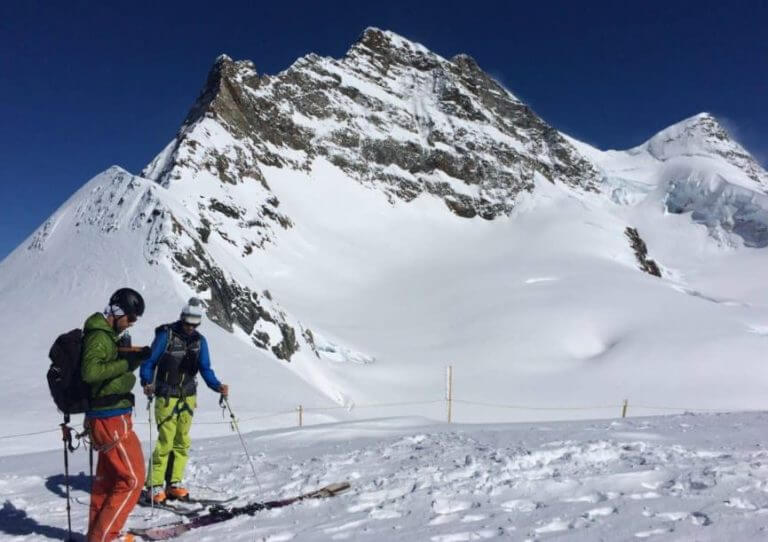
The balance between strength and resistance
We can divide the process of training for skiing in strength and resistance training. The former has the goal of generating the muscle mass needed for the high physical requirements. You can achieve this at the gym with weights, machines and common routines.
Of course, the most recommendable action is working with free weights. Squats, lunges and other exercises are a great option. The most specialized part of the training to get fit for skiing has to do with resistance training.
Another characteristic that differentiates the way in which different skiers get fit is their high technical demand. In this case, every exercise focuses on maintaining a good posture, technique, and balance. This way, we also work on promoting resistance.
A training program designed to get fit for skiing usually includes elements that allow the athlete to work with unstable surfaces. The most common tool for this is the fit ball. Likewise, we must emphasize the importance of working the abdominal area, focusing on the lateral muscles.
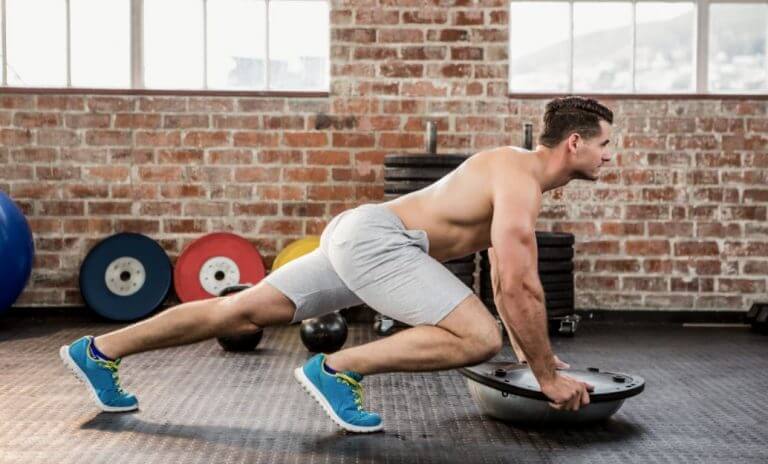
To get fit and ready for ski you must work your lumbopelvic area
Controlling the center of the body is essential for anyone who practices skiing. This is why many workouts focus on the lumbopelvic area.
To do this, exercises start from a horizontal position, simulating the skiing pose. During the movement, we use the arms, glutes, and abs in a coordinated way.
After that, we can start with the vertical exercises, which are usually more demanding. Lateral pulley arm movements are a regular option in these training programs. The idea is to gain strength by using different leg positions. As you can see, it’s all about making an effort to keep the balance.
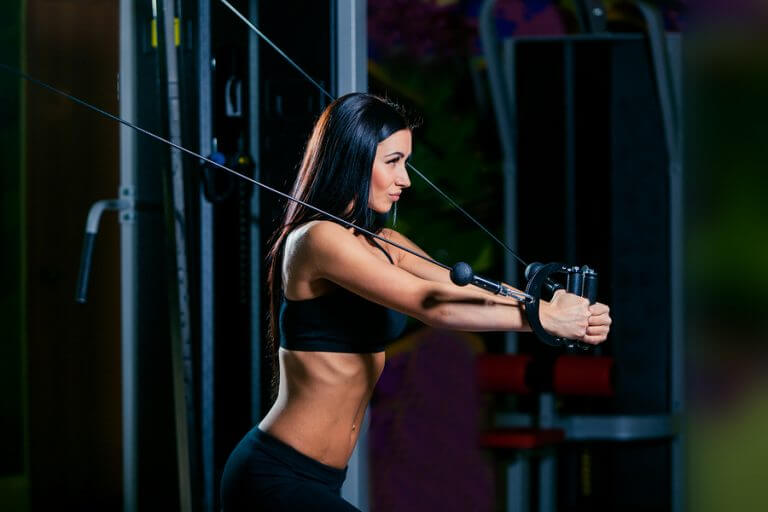
On the other hand, you can work on your hips and abductor muscles by using resistance bands around your quads. This routine requires you to beat the force of resistance from the inside towards the outside using your legs. Use only one leg as a support and point of balance, while using the other one to exert the force.
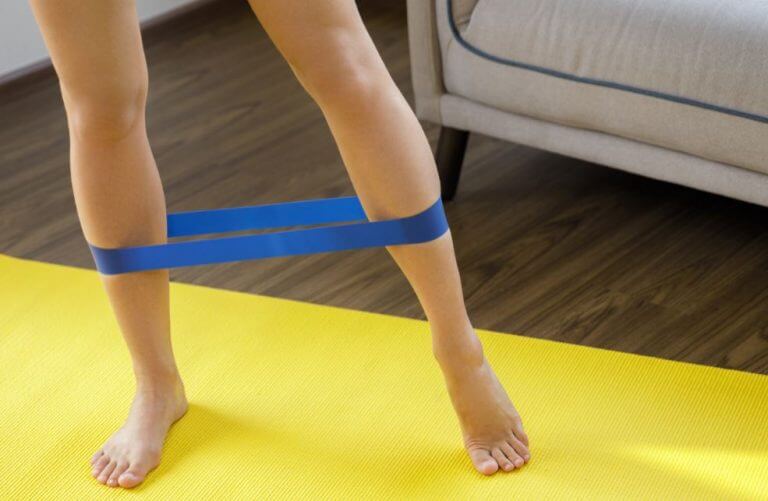
Three essential tips to get fit for ski
Firstly, an instructor is absolutely necessary. Even if you prepare physically to ski, you’ll still need a lot of practice time. The classes for this sport usually last for three to five hours, depending on the physical condition of the student. In some occasions, the sessions can go on for even longer.
Warming up is another important aspect. You should warm-up for every single sport you practice. This is the same for ski since athletes must go through long warm-up sessions. Stretching is also necessary for after skiing.
Finally, we should talk about the role of memory as a support tool. A skier must develop a very acute body memory. That’s why you should watch closely every posture you make. On a mental level, topographical memory will be a great ally to face each terrain.
In summary, properly getting a hold of the skis goes beyond a simple vacation on a snowy hill. Snow athletes have a lot of discipline, and they work on different abilities. It’s definitely not impossible, you just have to make gradual progress.
There’s a right way to get fit for ski. If we’re on a ski vacation, or we want to start practicing this sport, we can do certain exercises before the classes. The quads, hips, and glutes are the most demanded muscles in each movement.
The requirements for this sport go way beyond developing body strength. Skiers need good reflexes, control, and resistance to handle the skis on irregular surfaces. Therefore, in the following paragraphs, we’ll talk in detail about some exercises that can be beneficial for this discipline.
Ways to get fit for different types of skiing
Each one of the snow sports has a very particular range of movements. Because of this, training programs usually focus on the body parts that each athlete uses the most. Trainers then tend to make distinctions between cross-country distance skiers and alpine skiers.
In this sense, cross-country skiers perform a more complex job. They have to face constant climbs, which is why the quads are usually under the spotlight. On top of this, hip muscles and the backs of the legs also require special work.
On the other hand, alpine skiers focus more on the control of the skis while going downhill. Working on the quads and glutes is usually the main aspect for them. In both cases, self-control, balance, and resistance are the main goals of the training program.

The balance between strength and resistance
We can divide the process of training for skiing in strength and resistance training. The former has the goal of generating the muscle mass needed for the high physical requirements. You can achieve this at the gym with weights, machines and common routines.
Of course, the most recommendable action is working with free weights. Squats, lunges and other exercises are a great option. The most specialized part of the training to get fit for skiing has to do with resistance training.
Another characteristic that differentiates the way in which different skiers get fit is their high technical demand. In this case, every exercise focuses on maintaining a good posture, technique, and balance. This way, we also work on promoting resistance.
A training program designed to get fit for skiing usually includes elements that allow the athlete to work with unstable surfaces. The most common tool for this is the fit ball. Likewise, we must emphasize the importance of working the abdominal area, focusing on the lateral muscles.

To get fit and ready for ski you must work your lumbopelvic area
Controlling the center of the body is essential for anyone who practices skiing. This is why many workouts focus on the lumbopelvic area.
To do this, exercises start from a horizontal position, simulating the skiing pose. During the movement, we use the arms, glutes, and abs in a coordinated way.
After that, we can start with the vertical exercises, which are usually more demanding. Lateral pulley arm movements are a regular option in these training programs. The idea is to gain strength by using different leg positions. As you can see, it’s all about making an effort to keep the balance.

On the other hand, you can work on your hips and abductor muscles by using resistance bands around your quads. This routine requires you to beat the force of resistance from the inside towards the outside using your legs. Use only one leg as a support and point of balance, while using the other one to exert the force.

Three essential tips to get fit for ski
Firstly, an instructor is absolutely necessary. Even if you prepare physically to ski, you’ll still need a lot of practice time. The classes for this sport usually last for three to five hours, depending on the physical condition of the student. In some occasions, the sessions can go on for even longer.
Warming up is another important aspect. You should warm-up for every single sport you practice. This is the same for ski since athletes must go through long warm-up sessions. Stretching is also necessary for after skiing.
Finally, we should talk about the role of memory as a support tool. A skier must develop a very acute body memory. That’s why you should watch closely every posture you make. On a mental level, topographical memory will be a great ally to face each terrain.
In summary, properly getting a hold of the skis goes beyond a simple vacation on a snowy hill. Snow athletes have a lot of discipline, and they work on different abilities. It’s definitely not impossible, you just have to make gradual progress.
All cited sources were thoroughly reviewed by our team to ensure their quality, reliability, currency, and validity. The bibliography of this article was considered reliable and of academic or scientific accuracy.
- Morgan Petitniot. 7 pasos para mejorar y perfeccionar el esquí. Extraído de: https://espacio-esquiadores.com/documents/GU%C3%8DA%20-%207%20pasos%20para%20la%20mejora%20y%20perfeccionamiento%20del%20esqu%C3%AD.pdf
- José Hanff. Comprendamos el esquí. Extraído de: http://www.pepo.cl/wp-content/uploads/PDF/1_COMPRENDAMOS_EL_ESQUI.pdf
- Esquí España. 2003. Reglamento estaciones de esquí. Extraído de: https://www.aramon.com/estaticos/userfiles/file/Reglamento%20interno%20Atudem.pdf
This text is provided for informational purposes only and does not replace consultation with a professional. If in doubt, consult your specialist.








